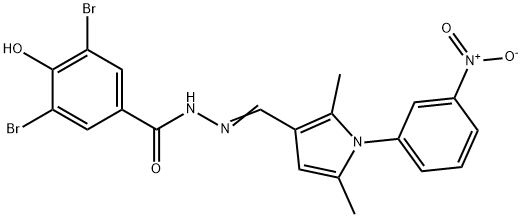363571-83-9
 363571-83-9 結(jié)構(gòu)式
363571-83-9 結(jié)構(gòu)式
基本信息
3,5-dibromo-N'-{(E)-[2,5-dimethyl-1-(3-nitrophenyl)-1H-pyrrol-3-yl]methylidene}-4-hydroxybenzohydrazide
Benzoic acid, 3,5-dibromo-4-hydroxy-, 2-[[2,5-dimethyl-1-(3-nitrophenyl)-1H-pyrrol-3-yl]methylene]hydrazide
物理化學(xué)性質(zhì)
常見(jiàn)問(wèn)題列表
KLC2-SKIP.
Remarkably, in kinesore-treated cells, the microtubule network is entirely reorganized into a series of loops and bundles. In addition, the lysosomal compartment accumulates in a juxtanuclear position, where there are relatively few microtubules. At 50 μM kinesore, this phenotype is highly penetrant, with 95±2.4% (n=3, total of 200 cells) of cells exhibiting a reorganized nonradial microtubule network. In titration experiments, in cells treated for 1 h, this phenotype becomes apparent at a concentration of 25 μM kinesore, with relatively little effect at or below concentrations of 12.5 μM. The effect is reversible because a 2-h washout of kinesore from cells treated for 1 h led to the reestablishment of the radial microtubule array. This kinesore-induced reorganization of the microtubule network is observed in a panel of mammalian normal and cancer cell lines. In wild-type cells, 50 μM kinesore induces the remodeling of the microtubule network and the formation of extensive microtubule-rich projections. This phenotype is strongly suppressed in Kif5B knockout cells, confirming that microtubule remodeling induced by kinesore is dependent upon the presence of kinesin-1.